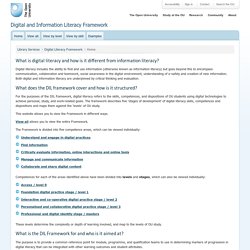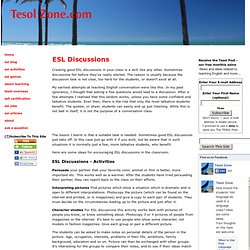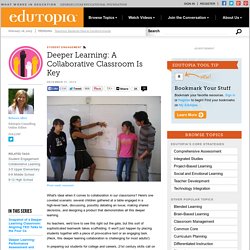

Creating Products to Show and Share Learning. My students produced a lot of media, including podcasts.

Before my students scripted and recorded a podcast, they would listen to several sample episodes and critique them. We would make a list of what was really good about the episode and what could be improved. I reminded students of the items on these lists periodically as they worked on their own episodes. Yes, you can tell students what makes a great production. However, having them be the ones to delineate the qualities of a great production is much better. Because students might have some harsh criticism of sample projects, I made sure those samples were not by students at our school. Padlet can help capture students’ observations about example media. Padlet Tip: In a wall’s Settings, click Privacy and turn on Moderation so that nothing is posted without your approval. Some questions that help guide a discussion about sample productions: What did you notice?
What’s better than samples from the web? Breaker. Digital and Information Literacy Framework. What is digital literacy and how is it different from information literacy?

Digital literacy includes the ability to find and use information (otherwise known as information literacy) but goes beyond this to encompass communication, collaboration and teamwork, social awareness in the digital environment, understanding of e-safety and creation of new information. Both digital and information literacy are underpinned by critical thinking and evaluation. What does the DIL framework cover and how is it structured? For the purposes of the DIL framework, digital literacy refers to the skills, competences, and dispositions of OU students using digital technologies to achieve personal, study, and work-related goals. The framework describes five ‘stages of development’ of digital literacy skills, competences and dispositions and maps them against the ‘levels’ of OU study.
This website allows you to view the Framework in different ways. View all allows you to view the entire Framework. Contact us. Creativity – the challenge of defining, developing and assessing it. Apr 11 Thanks to Education Week‘s blog for drawing my attention to this work on Creativity.

Creativity is defined as one of the four 4Cs of Learning and Innovation in 21st Century learning. This OECD Creativity working paper is an interesting start in working out how we can define, develop and assess this wide ranging ‘skill’ we call Creativity. On display in the image above is a protype assessment tool developed from much research as outlined in the working paper.
Projects and webquests. Crowdsourcing. Larry Ferlazzo, Teacher. (This article was originally published in the September, 2006 issue of "Language Magazine" under the title "Building Cathedrals in the ESL Classroom.

") By Larry Ferlazzo In a previous article for “Language Magazine” I talked about specific tactics that ESL teachers could implement in their classrooms using community organizing methodology. The four I described – building relationships, building on prior knowledge, identifying what students want to learn, and learning by doing -- can all be effectively used on their own. However, their effectiveness can be magnified immeasurably if they and other organizing techniques are used in the broader context of what I would call the “organizing cycle” of planning, action, and reflection.
Digital storytelling. ESL Discussions. Creating good ESL discussions in your class is a skill like any other.

Sometimes discussions fail before they've really started. The reason is usually because the discussion task is not clear, too hard for the students, or doesn't exist at all. My earliest attempts at teaching English conversation were like this. In my past ignorance, I thought that asking a few questions would lead to a discussion. After a few attempts I realised that this seldom works, unless you have some confident and talkative students.
The lesson I learnt is that a suitable task is needed. Here are some ideas for encouraging ESL discussions in the classroom. ESL Discussions - Activities Persuade your partner that your favorite color, animal or film is better, more important etc. Interpreting pictures Find pictures which show a situation which is dramatic and is open to different interpretations. Character studies For ESL discussions this activity works best with pictures of people you know, or know something about. About This Site - Web 2.0 Collaboration [main menu] Garmston Wellman: Seven Norms of Collaboration - Web 2.0 Collaboration [main menu] Deeper Learning: A Collaborative Classroom Is Key. What's ideal when it comes to collaboration in our classrooms?

Here's one coveted scenario: several children gathered at a table engaged in a high-level task, discussing, possibly debating an issue, making shared decisions, and designing a product that demonstrates all this deeper learning. As teachers, we'd love to see this right out the gate, but this sort of sophisticated teamwork takes scaffolding. It won't just happen by placing students together with a piece of provocative text or an engaging task. (Heck, this deeper learning collaboration is challenging for most adults!) In preparing our students for college and careers, 21st century skills call on us to develop highly collaborative citizens -- it's one of the 4 Cs, after all. So how do we begin this scaffolded journey? Establish Group Agreements Deciding on group norms, or agreements, right at the get go will give each student a voice and provide accountability for all.
Teach Them How to Listen. Challenge Based Learning - Browse Challenges. Ulrich - Design: Creation of Artifacts in Society.